Hey there! If you’ve landed on this page, you’re probably wondering what the fuss is about in early May. The short answer: TD Awareness Week is a national, week‑long push to shine a light on tardive dyskinesia (TD), a condition that touches the lives of over 800,000 Americans. The long answer? It’s a chance for all of us—patients, families, volunteers, and curious by‑standers—to learn, share, and act in ways that truly matter.
Why does this week matter? Because a staggering 60 % of people living with TD still go undiagnosed, and the stigma attached to involuntary movements often leaves folks feeling isolated and embarrassed. By joining the conversation, you help break that silence, spread accurate information, and maybe even save a life. So grab a cup of coffee, settle in, and let’s explore how you can turn empathy into action.
Why It Matters
First, let’s get a quick snapshot of the problem. TD is a chronic movement disorder that causes repetitive, uncontrollable motions—think lip‑puckering, tongue‑darting, blinking, or hand‑shaking. It usually stems from long‑term use of antipsychotic medications prescribed for conditions such as bipolar disorder, major depression, or schizophrenia. Age over 55, post‑menopausal status, and substance‑use disorders crank up the risk, too.
According to a study by the RE‑KINECT research group, more than three‑quarters of people with TD report feeling self‑conscious or embarrassed about their movements. NIH’s National Institute of Neurological Disorders and Stroke notes that the condition can also bring physical discomfort, sleep disturbances, and social withdrawal. In short, TD isn’t just a “twitch”; it can ripple through every facet of a person’s life.
That’s why designating the first week of May as TD Awareness Week—recognized by all 50 states, Washington D.C., and countless mental‑health organizations—matters. Unified messaging creates a louder voice in the media, encourages policy makers to fund research, and provides a calendar for events that bring communities together (the Movement Disorders Policy Coalition has slated May 4‑10 2025 for its national campaign).
Six Ways to Help
Ready to roll up your sleeves? Below is a handy table that breaks down six concrete actions you can take, whether you have a few minutes or an entire weekend.
| # | Action | What to Do | How It Helps |
|---|---|---|---|
| 1 | Volunteer at a TD event | Sign up through local hospitals, advocacy groups, or the Movement Disorders Policy Coalition’s volunteer portal. | Face‑to‑face education builds trust and personal connections. |
| 2 | Host an info session | Use the free “TD Toolkit” PDF, set up a Zoom or community‑center meeting, and invite a clinician to speak. | Reaches people who can’t attend national events and spreads accurate facts. |
| 3 | Amplify on social media | Change your profile picture with the official TD‑week frame, post with #TDAwarenessWeek and #Screen4TD, share a short personal story or infographic. | Creates viral momentum and normalizes the conversation. |
| 4 | Partner with schools or workplaces | Offer a 15‑minute “TD 101” talk, hand out printed brochures (like the TalkAboutTD Patient Brochure). | Educates future caregivers and reduces workplace discrimination. |
| 5 | Donate or fundraise | Contribute to organizations such as NAMI Virginia or the National Organization for Tardive Dyskinesia; organize a walk‑athon with a TD‑themed route. | Funds research, patient‑support services, and advocacy work. |
| 6 | Advocate for policy change | Write to your local legislator, sign the MDPC petition, and share the policy brief PDF. | Pushes systemic improvements like better insurance coverage for newer treatments. |
Each of these actions is a piece of the larger puzzle. Pick one that feels doable, and remember: even a single tweet can spark a conversation that leads to a lifetime of support for someone living with TD.
Quick TD Facts
When you talk about TD—whether online or in a coffee‑shop chat—having a few solid facts at your fingertips makes you a reliable source. Here’s a quick cheat‑sheet you can keep on hand.
What Is Tardive Dyskinesia?
TD is a persistent involuntary movement disorder that often shows up as facial grimacing, lip‑puckering, tongue‑darting, excessive blinking, or jerky finger movements. It’s not a “side effect” that disappears on its own; it’s a chronic condition that typically needs medical attention.
Common Causes & Risk Factors
- Long‑term use of antipsychotic medications (especially older, “typical” agents).
- Age ≥ 55 years.
- Post‑menopausal status in women.
- Concurrent substance‑use disorder.
- Underlying mood disorders (bipolar, major depression).
All of the above are highlighted on the TalkAboutTD resource page, which also provides a quick self‑screening questionnaire.
Treatment Landscape
Good news: TD isn’t hopeless. Treatment options include:
- Medication adjustments—switching to a lower‑risk antipsychotic or tapering dose under a doctor’s supervision.
- VMAT‑2 inhibitors (e.g., valbenazine, deutetrabenazine) that have shown up to a 30 % reduction in movement severity, according to a systematic review by Solmi et al. (2018).
- Behavioral strategies—stress reduction, mindfulness, and targeted physical therapy can lessen the intensity of movements.
Early detection is key. A neurologist or movement‑disorder specialist can evaluate you with a standardized rating scale and help craft a personalized plan.
Real Stories
Data are powerful, but nothing beats hearing a real voice. Below are a couple of brief snapshots that illustrate how awareness actions have changed lives.
Kathie’s Journey
Kathie, a 42‑year‑old teacher, first noticed subtle lip‑puckering during a Zoom class. She felt embarrassed and thought it was just a nervous habit. After stumbling upon a TD‑awareness flyer at her local pharmacy (distributed during TD Awareness Week), she reached out to a neurologist, received a diagnosis, and was switched to a VMAT‑2 inhibitor. “I finally felt seen,” she says. “It wasn’t just a twitch; it was my whole being finally being understood.”
Volunteer Victor
Victor, a college student studying public health, signed up to volunteer at a TD screening event in his city. He spent two afternoons handing out brochures and listening to patients share their stories. “Seeing the relief on a dad’s face when he finally learned that his son’s movements had a name and a treatment option—that’s the kind of impact you can’t put a number on,” he tells me.
These narratives reinforce why every small act during TD Awareness Week adds up to a chorus of hope.
Resources & Tools
When you’re ready to dive deeper, these resources are solid anchors you can depend on.
Downloadable PDFs
- TD Awareness Toolkit – a one‑page cheat sheet with key facts, social‑media graphics, and a volunteer checklist.
- Patient Brochure – printable guide for preparing doctor appointments, understanding symptoms, and exploring treatment options.
- Volunteer Guide – step‑by‑step instructions for organizing a local event, from venue booking to post‑event follow‑up.
All PDFs are freely available on advocacy sites like TalkAboutTD and the Movement Disorders Policy Coalition.
Online Support Communities
Connecting with others who “get it” can be a lifeline. Check out these platforms:
- TalkAboutTD forums – moderated discussions, Q&A with clinicians, and downloadable resources.
- National Organization for Tardive Dyskinesia (NOTD) – virtual support groups, patient‑story videos, and a symptom‑tracker app.
- Local chapters of NAMI (National Alliance on Mental Illness) often host monthly TD‑focused meet‑ups, especially during the awareness week.
Trusted Medical Sites
For the most up‑to‑date, evidence‑based information, turn to these reputable sources:
Measuring Your Impact
It feels great to help, but how do you know you’re making a dent? Here are a few simple ways to track progress:
- Volunteer Hours – log the time you spend at events; many organizations publish annual volunteer‑hour totals.
- Social‑Media Reach – platforms give you impressions and engagement numbers; a single post with the #TDAwarenessWeek hashtag can reach thousands.
- Materials Distributed – count brochures, flyers, or toolkit PDFs you hand out.
- Stories Collected – gather testimonials from participants; they become powerful evidence for future campaigns.
At the end of the week, consider writing a short recap blog or social‑media post (“We hosted three virtual workshops, shared 500 brochures, and heard 12 new personal stories”). Celebrating these wins reinforces community momentum and encourages people to come back next year.
Take the First Step
Now that you’ve got the why, the what, and the how, what’s holding you back? The beauty of TD Awareness Week is that you can tailor your involvement to fit any schedule, skill set, or comfort level. Whether you’re a seasoned volunteer or someone who’s just curious, there’s a place for you.
Pick one of the six actions above, download a resource, and set a calendar reminder for the first week of May. Share what you’re doing with a friend—maybe they’ll join you, and together you’ll amplify the message even further.
Remember, awareness isn’t just about knowledge; it’s about compassion in motion. By showing up, listening, and spreading accurate information, you become part of a larger force that can turn silence into understanding, and misunderstanding into hope.
So, are you ready to make an impact this TD Awareness Week? Let’s do it together.


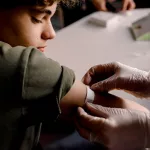



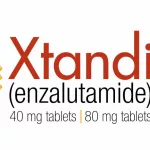

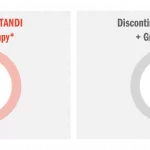

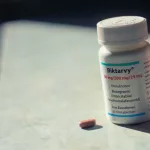

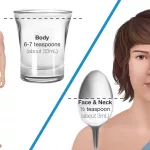
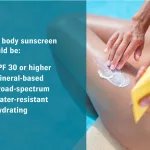



Leave a Reply
You must be logged in to post a comment.